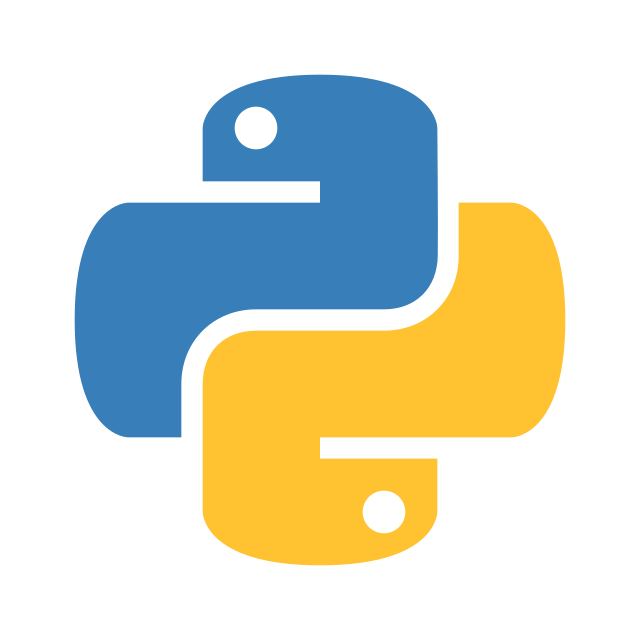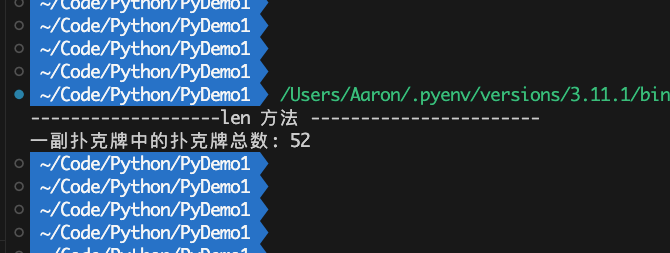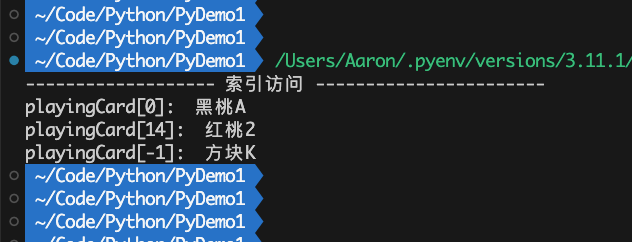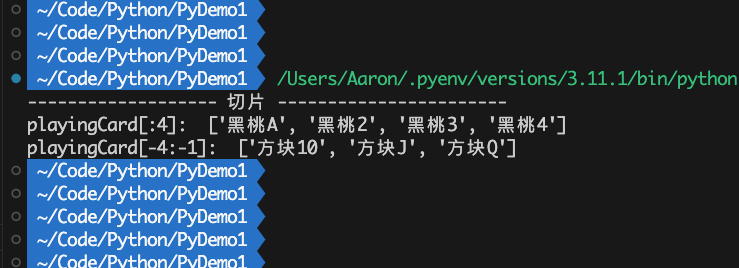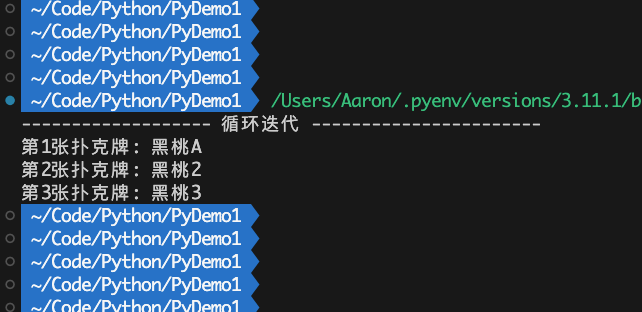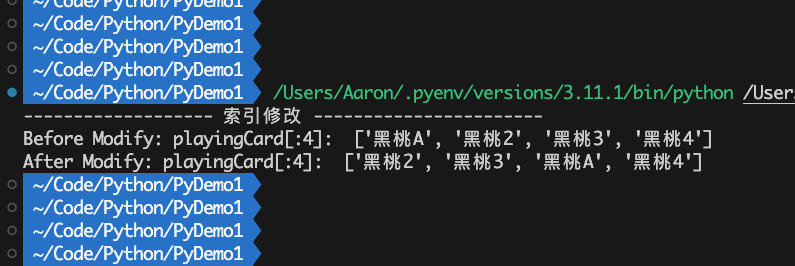这里介绍Python的Sequence Protocol 序列协议
实践 对于我们自定义的对象,如果期望其可以支持序列的相关操作,只需对该类实现Sequence Protocol序列协议即可。这里我们提供了一个自定义类——一副扑克牌(不包含大小王)
1 2 3 4 5 6 7 8 9 10 11 12 13 14 15 16 17 18 19 20 21 22 23 class PlayingCard : """ 一副扑克牌 """ suits = ["黑桃" ,"红桃" ,"梅花" ,"方块" ] nums = ["A" ] + [str (n) for n in range (2 ,11 )] + ["J" , "Q" , "K" ] def __init__ (self ): self.cards = [suit+num for suit in PlayingCard.suits for num in PlayingCard.nums] def __len__ (self ): return len (self.cards) def __getitem__ (self, index ): return self.cards[index] def __setitem__ (self, index, value ): self.cards[index] = value def __delitem__ (self, index ): self.cards[index] = None
len方法 调用len()方法获取长度,Python会自动调用自定义对象的__len__()方法
1 2 3 4 print ("-------------------len 方法 -----------------------" )playingCard = PlayingCard() cards_num = len ( playingCard ) print ("一副扑克牌中的扑克牌总数:" , cards_num)
索引访问 使用索引访问元素时,Python会自动调用自定义对象的__getitem__()方法
1 2 3 4 5 print ("------------------- 索引访问 -----------------------" )playingCard = PlayingCard() print ("playingCard[0]: " , playingCard[0 ])print ("playingCard[14]: " , playingCard[14 ])print ("playingCard[-1]: " , playingCard[-1 ])
切片 切片时,Python会自动调用自定义对象的__getitem__()方法
1 2 3 4 5 print ("------------------- 切片 -----------------------" )playingCard = PlayingCard() print ("playingCard[:4]: " , playingCard[:4 ])print ("playingCard[-4:-1]: " , playingCard[-4 :-1 ])
迭代 for循环时我们虽然没有实现__iter__()方法,但是实现了__getitem__()方法。故Python会自动创建一个迭代器,尝试按从索引0开始按顺序获取元素
1 2 3 4 5 6 7 8 9 print ("------------------- 循环迭代 -----------------------" )playingCard = PlayingCard() count=1 for card in playingCard: print (f"第{count} 张扑克牌: {card} " ) count = count+1 if ( count==4 ): break
索引修改 通过索引修改元素时,Python会自动调用自定义对象的__setitem__()方法
1 2 3 4 5 6 print ("------------------- 索引修改 -----------------------" )playingCard = PlayingCard() print ("Before Modify: playingCard[:4]: " , playingCard[:4 ])playingCard[0 ], playingCard[1 ], playingCard[2 ] = playingCard[1 ], playingCard[2 ], playingCard[0 ] print ("After Modify: playingCard[:4]: " , playingCard[:4 ])
del删除 使用del关键字删除元素时,Python会自动调用自定义对象的__delitem__()方法
1 2 3 4 5 6 7 print ("------------------- del删除 -----------------------" )playingCard = PlayingCard() print ("Before Delete: playingCard[10:15]: " , playingCard[10 :15 ])del playingCard[11 ]del playingCard[13 ]print ("After Delete: playingCard[10:15]: " , playingCard[10 :15 ])
参考文献
Python编程·第3版:从入门到实践 Eric Matthes著
Python基础教程·第3版 Magnus Lie Hetland著
流畅的Python·第1版 Luciano Ramalho著
